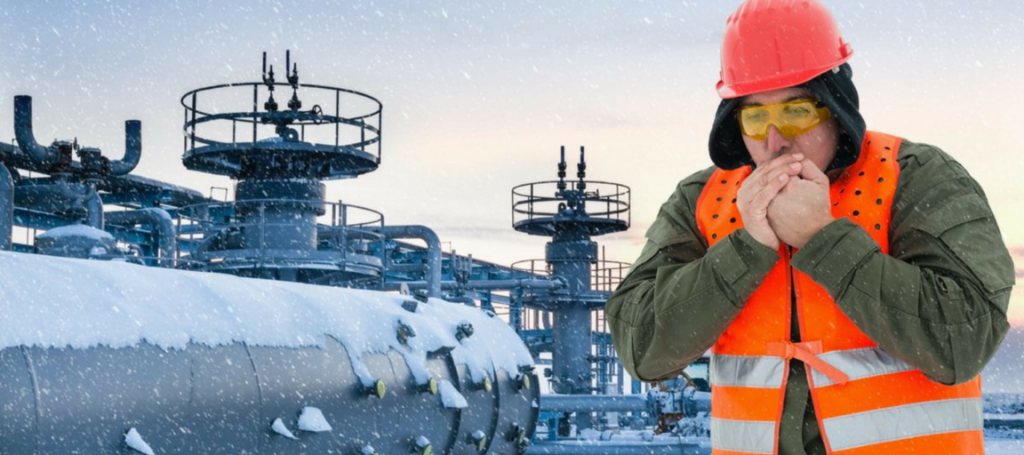
To reduce the potential for injury or disease you need to control the risk. The most effective way to do this is to eliminate the risk whenever possible. Can the work be done at a different time? Is there a safer process?
If that is not possible, there are other ways to help reduce the risks of working in cold weather:
 Education: Workers and supervisors should be educated about the symptoms of exposure to severe and emergency procedures in the case of injury due to cold weather.
Education: Workers and supervisors should be educated about the symptoms of exposure to severe and emergency procedures in the case of injury due to cold weather.
 Modification to Work: Making physical modifications to facilities, equipment and processes to reduce exposure. For example, reschedule work to the warmest time of the day. Take frequent short breaks in warm, dry areas.
Modification to Work: Making physical modifications to facilities, equipment and processes to reduce exposure. For example, reschedule work to the warmest time of the day. Take frequent short breaks in warm, dry areas.
 PPE: Avoid cotton and goose down to help prevent hypothermia. To work comfortably make sure to put on an extra layer of clothing. Mitts are warmer than gloves. Wear a winter toque – 30 to 50% of body heat is lost through the head.
PPE: Avoid cotton and goose down to help prevent hypothermia. To work comfortably make sure to put on an extra layer of clothing. Mitts are warmer than gloves. Wear a winter toque – 30 to 50% of body heat is lost through the head.
 Your Body needs Fuel: Working outdoors requires your body to produce heat to keep you warm so eat up! Hydration is essential to keep you warm, drink on average 4 litres of fluid per day. Avoid drinks with caffeine and alcohol.
Your Body needs Fuel: Working outdoors requires your body to produce heat to keep you warm so eat up! Hydration is essential to keep you warm, drink on average 4 litres of fluid per day. Avoid drinks with caffeine and alcohol.
 Surveillance and Monitoring: The temperature should be monitored every 4 hours, so workers are aware of changes in temperature. Regular safety checks should be in place. For more information on lone worker monitoring solutions, contact one of our Lone Worker Safety Experts.
Surveillance and Monitoring: The temperature should be monitored every 4 hours, so workers are aware of changes in temperature. Regular safety checks should be in place. For more information on lone worker monitoring solutions, contact one of our Lone Worker Safety Experts.
If your duties require travelling in cold weather, make sure your vehicle is in good working order. Have a cold weather safety kit in your vehicle.
Being prepared for working in cold weather conditions will help minimize the risks and allow you to be more productive.
